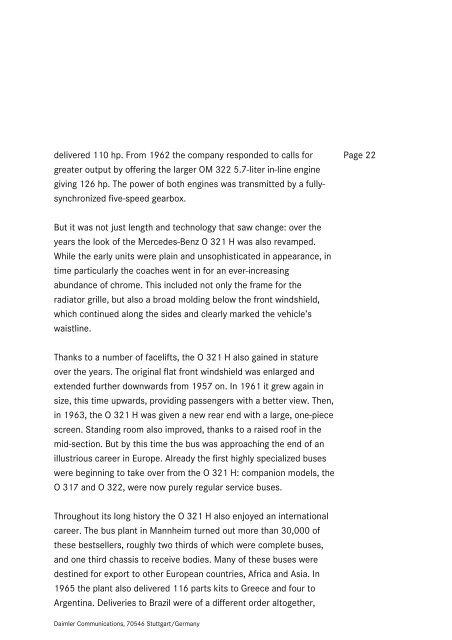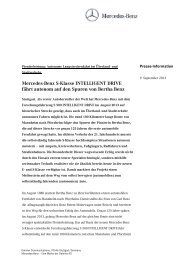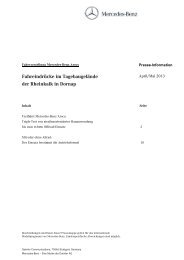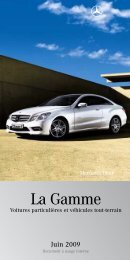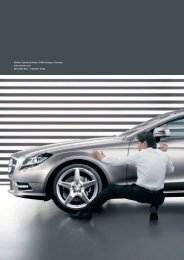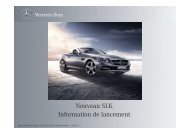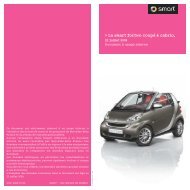Mercedes-Benz Bus History - Daimler
Mercedes-Benz Bus History - Daimler
Mercedes-Benz Bus History - Daimler
Create successful ePaper yourself
Turn your PDF publications into a flip-book with our unique Google optimized e-Paper software.
delivered 110 hp. From 1962 the company responded to calls for<br />
greater output by offering the larger OM 322 5.7-liter in-line engine<br />
giving 126 hp. The power of both engines was transmitted by a fully-<br />
synchronized five-speed gearbox.<br />
But it was not just length and technology that saw change: over the<br />
years the look of the <strong>Mercedes</strong>-<strong>Benz</strong> O 321 H was also revamped.<br />
While the early units were plain and unsophisticated in appearance, in<br />
time particularly the coaches went in for an ever-increasing<br />
abundance of chrome. This included not only the frame for the<br />
radiator grille, but also a broad molding below the front windshield,<br />
which continued along the sides and clearly marked the vehicle’s<br />
waistline.<br />
Thanks to a number of facelifts, the O 321 H also gained in stature<br />
over the years. The original flat front windshield was enlarged and<br />
extended further downwards from 1957 on. In 1961 it grew again in<br />
size, this time upwards, providing passengers with a better view. Then,<br />
in 1963, the O 321 H was given a new rear end with a large, one-piece<br />
screen. Standing room also improved, thanks to a raised roof in the<br />
mid-section. But by this time the bus was approaching the end of an<br />
illustrious career in Europe. Already the first highly specialized buses<br />
were beginning to take over from the O 321 H: companion models, the<br />
O 317 and O 322, were now purely regular service buses.<br />
Throughout its long history the O 321 H also enjoyed an international<br />
career. The bus plant in Mannheim turned out more than 30,000 of<br />
these bestsellers, roughly two thirds of which were complete buses,<br />
and one third chassis to receive bodies. Many of these buses were<br />
destined for export to other European countries, Africa and Asia. In<br />
1965 the plant also delivered 116 parts kits to Greece and four to<br />
Argentina. Deliveries to Brazil were of a different order altogether,<br />
<strong>Daimler</strong> Communications, 70546 Stuttgart/Germany<br />
Page 22


